|
|
Rome, the capital city of Italy, is home to around 4 million people as of the year 2022. Amongst this large population is a huge number of digital nomads who have moved to Rome from several different countries. The city is popular amongst tourists and is always bustling with all kinds of people. The digital nomad crowd is plentiful in this city, so you’ll be able to meet like-minded people and make new friends in this city.
It’s important to remember that while a city can have many appealing factors, you must consider the negative side of life in one specific area. After this, you can decide if the city is suitable for you and your unique lifestyle. Rome has a significant number of positives such as the wonderful transportation systems, historic culture, and businesses available for all of your digital nomad needs. But there are negative elements to life in this gorgeous city that you may want to consider before deciding if it’s the place for you such as the language barrier and visa application process.
Positives of Life in Rome

Rome is a unique historical city that is filled to the brim with all kinds of historic and cultural charm. There is so much to see and so much to do that you’ll never run out of activities to do in your free time while you’re living there. The city is increasingly becoming more and more suitable for digital nomads, with cafes and workspaces adjusting to this type of workforce.
Places to Work From
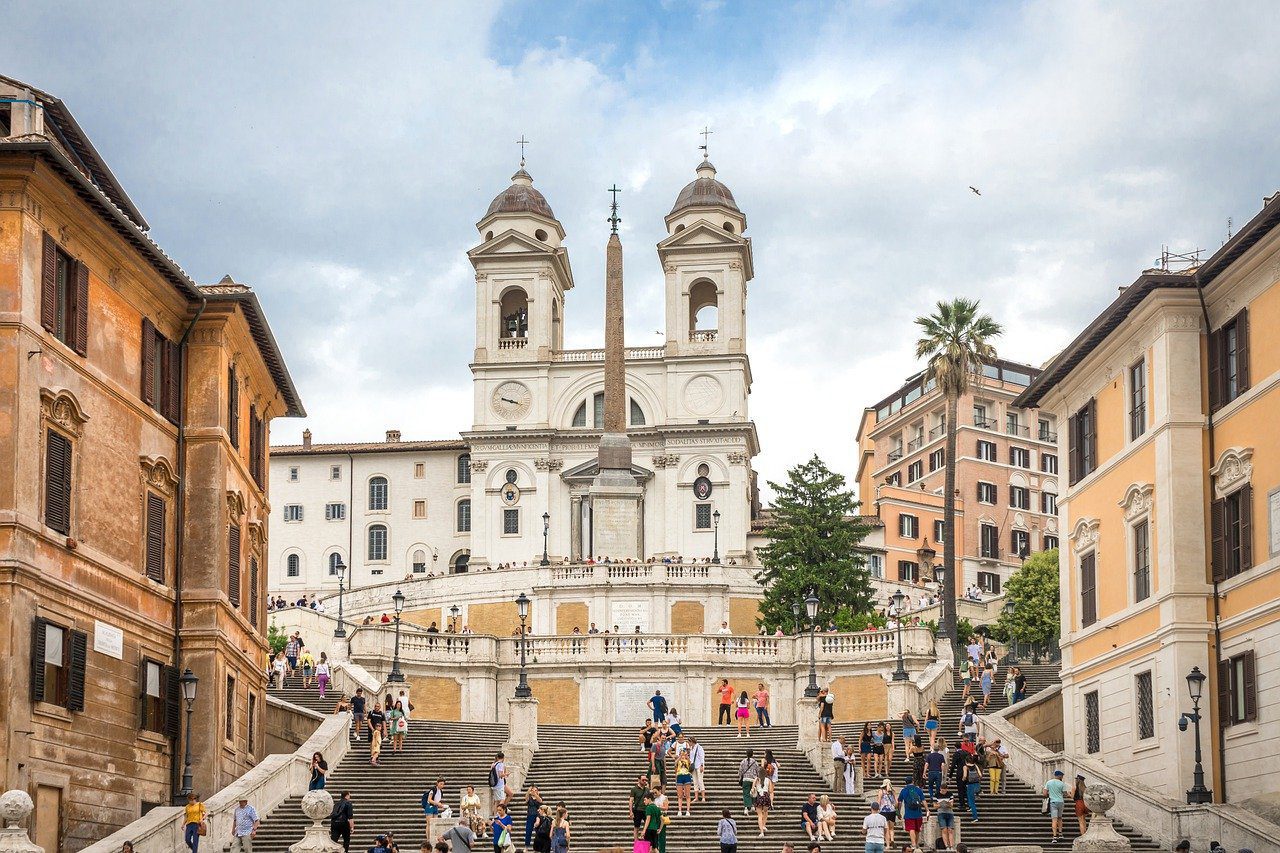
Working as a digital nomad can mean a large amount of the time you spend working is spent at home alone. If you want to take your work into a public space for the day, Rome has many options for this. From quirky little cafes to shared workspaces that you can rent for some time, you’re sure to find something that works for you. We’ve listed a few options below that you can choose from, depending on your personal preferences.
Cafe Letterario
This business is a mixture of absolutely everything you can imagine in terms of a workspace. This includes a cafe, a co-working space, a library, and a live concert spot. Located in Via Ostiense, this quirky little spot remains open until 2 am, which allows for all kinds of work schedules. You can complete your daily tasks in the quiet workspaces and then spend your evening at one of the live talks or concerts located in the same venue!
Coaster Co-Working
If you’re looking for a quieter and more peaceful environment in a business setting amongst fellow digital nomads, Coaster Co-Working is the place for you. This business can be found at P.za di S. Giovanni in Laterano. Renting a space in this room can cost you from 180 euros a month. This membership includes free WIFI, printing facilities, free access to events taking place in the venue, and cabinet spaces for storage.
Pimm’s
This business is perfect for anyone who can work with a little more noise around them. It’s a less conventional type of workspace that takes the form of a wine bar with live music. Pimm’s provides free WIFI, a range of food and drinks, and tables for you to complete your work. The business is open early (10 am) for breakfast and remains open until 2 am! If you like to work later in the day with a nice meal and some drinks, Pimm’s is the place for you.
A Stunning Culture
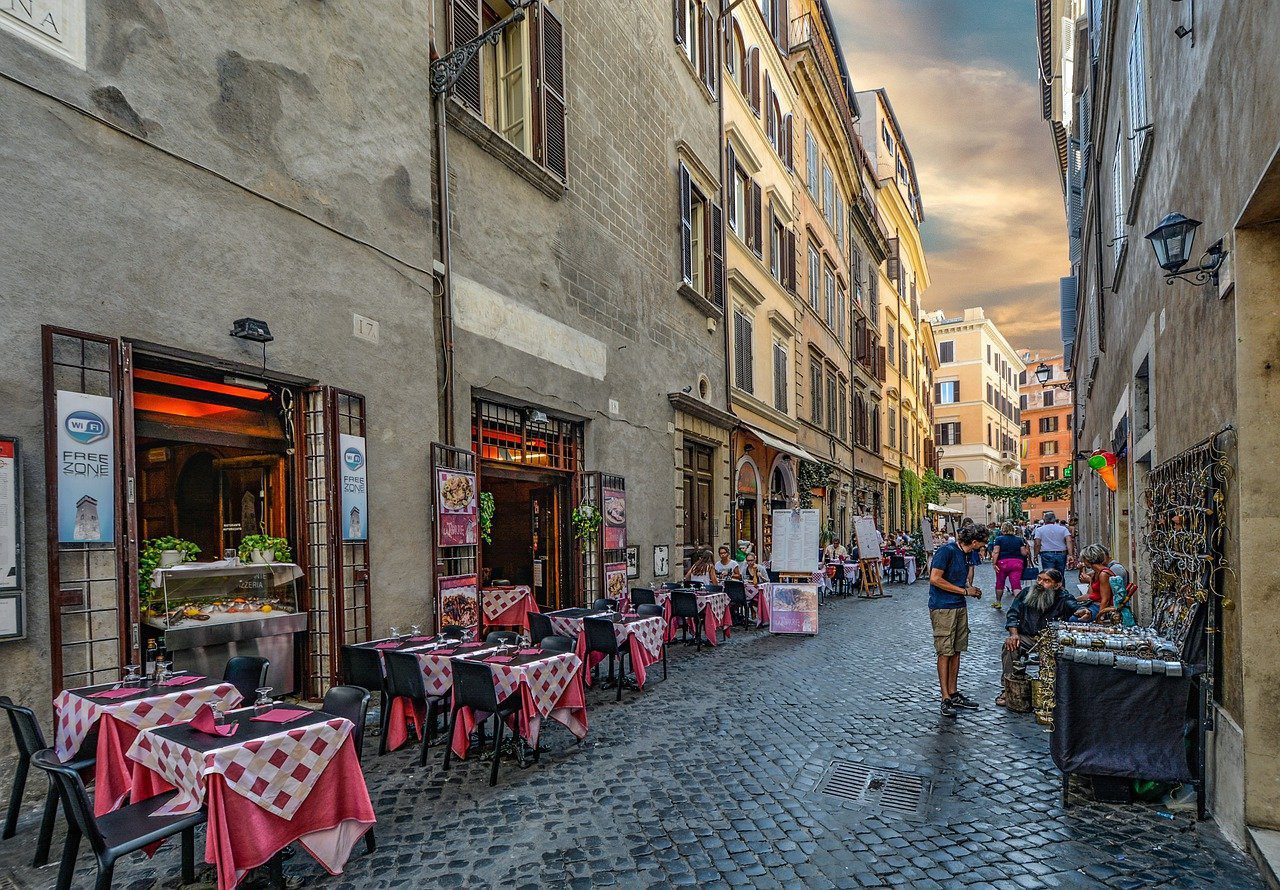
One of the most attractive elements of moving to Rome to work as a digital nomad is the gorgeous culture associated with this capital city of Italy. You can spend your free time exploring the city and experiencing the culture, food, and history of the location.
Food is a massive part of Roman culture. A lot of tourists visit the city purely for the food and unique Italian dishes that the city has to offer. The cost of meals depends on where you eat but you’ll be able to find affordable options if you’re on a budget. Along with this, groceries are quite affordable compared to the price of grocery shopping in other parts of Europe. A loaf of bread can cost as little as one euro and a bottle of wine can cost around 5 euros.
Rome is popular for its wonderful pasta and pizza. Carbonara is one of the more popular dishes in this city. Typically, Italian culture involves at least two courses, sometimes even three or four! Tourist-filled areas will generally be more expensive as tourists will go to these areas to try some classic Italian pasta or pizza. As a result, these places will hike up their prices. Wine is usually accompanied by almost any meal, and you’ll find a lot of wine breweries around the city.
Excellent Transportation Available
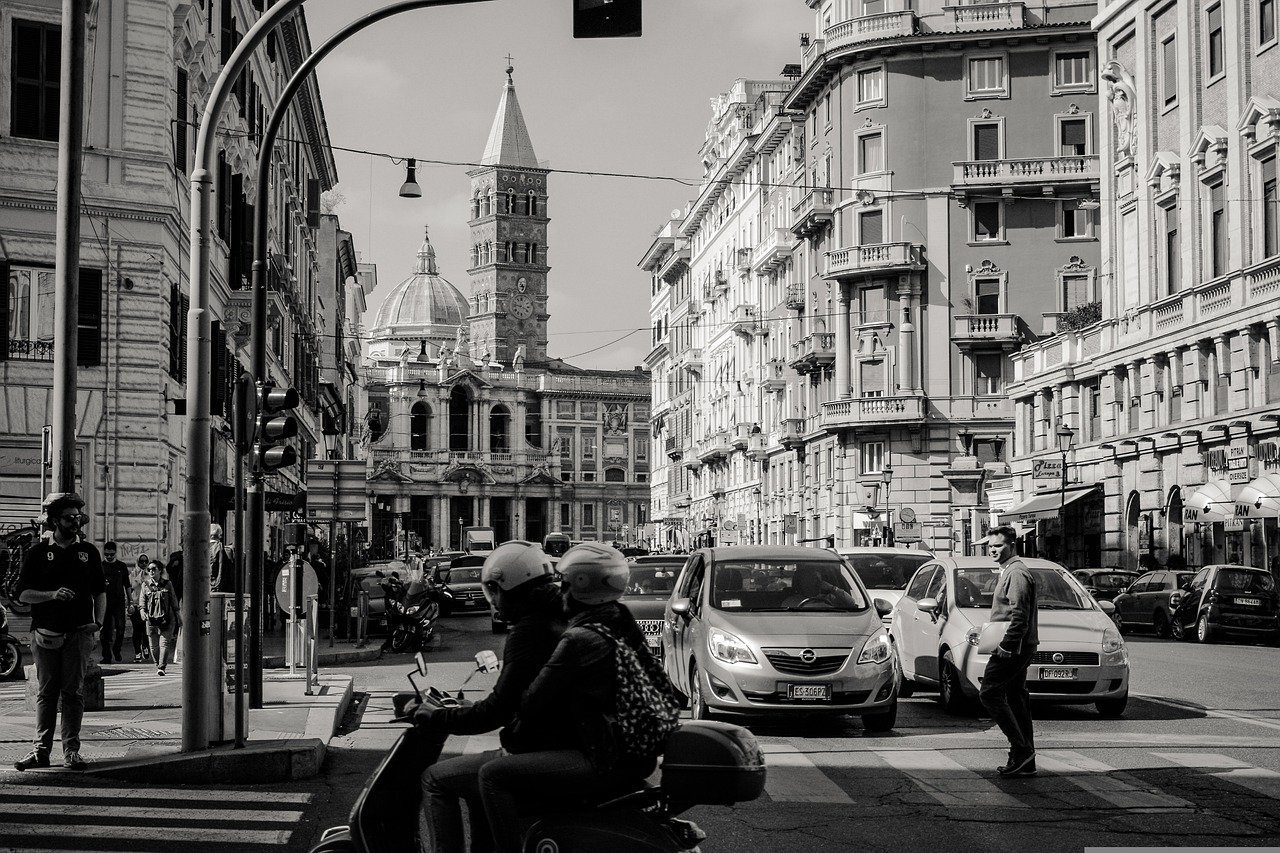
While many parts of Rome can easily be accessed on foot, the transportation systems throughout the city are cheap, easy to use, and plentiful. Buses would be the most used form of public transportation. Because of this, there are over 300 bus lines throughout Rome, and you can purchase a day pass for only 6 euros. If the bus is too crowded, there are also trams available around the city that are used by fewer people. The trams go less frequently so there are positive and negative elements to all of these options.
Of course, you could also use a taxi service in Rome as your mode of transportation. However, taxis in Rome are very expensive and taxi drivers can exploit you for more money, especially if they can pick up that you’re new to the city and unaware of typical taxi fares. Taxies have additional fees such as a booking fee and extra costs depending on what extra baggage, you’re bringing with you. We would recommend using public transport as opposed to taxis, especially if you’re on a budget.
A Range of Wonderful Neighbourhoods
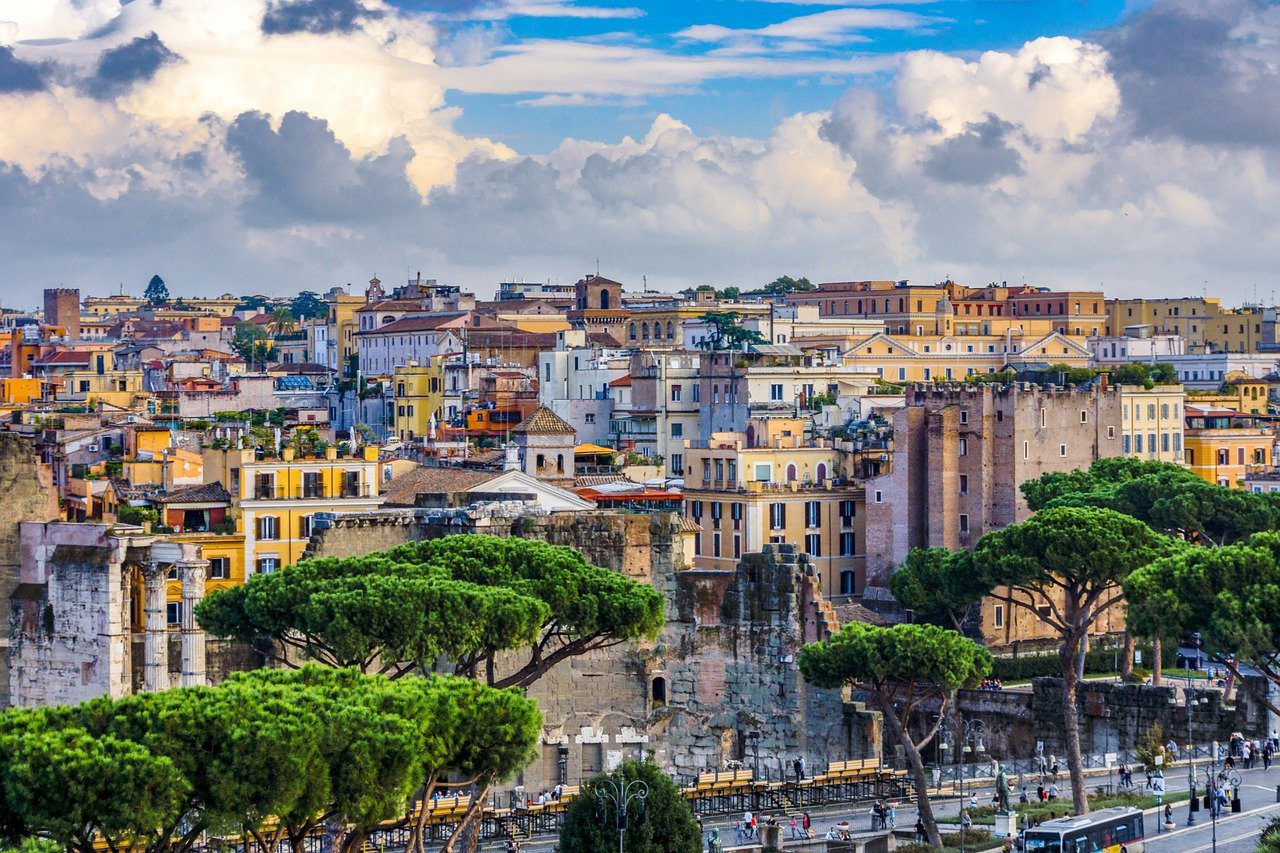
You will be spoilt for choice when deciding on an area to live in when moving to Rome as a digital nomad. You may need a small amount of Italian to properly research and find a suitable apartment or house share, as most of the advertisements are written in Italian. Nestpick and Casa.it are both wonderful websites that can help with the apartment hunting process.
Prati is a relaxing neighbourhood in Rome that is filled to the brim with digital nomads! The calming environment along with cheaper renting options and a close distance to the centre means that this neighbourhood is becoming more and more popular every year. People are drawn to this area for several reasons including the high-end shopping streets and unique restaurants. You can spend your evenings exploring the wonderful neighbourhood and surround yourself with fellow business folk during the day. It’s the perfect mix for a digital nomad!
If you’d rather reside in a livelier neighbourhood, Trastevere is the place for you. This neighbourhood is constantly busy and full of lively music, crowds, and beautiful scenery. One of the elements that you should consider is that the evenings can become quite loud and full of tourists so it can be difficult to get an early night’s sleep if you live in this area. The restaurant and bar options are endless, so you’ll always have a place to go after work or on the weekends!
The neighbourhood of Monteverde would be perfect for any digital nomads with families. The area is known for having one of the largest parks in Rome which is called the Villa Pamphili. The area is much quieter and located away from any chaos and noise, making it perfect for digital nomads looking to work somewhere while raising a family. One of the downfalls of this area is that it’s not very well connected in terms of public transport, but this also means the roads are quiet and this makes it safer for children to play outside.
As of 2022, Rome experienced the largest decrease in rental prices, potentially as a result of the loss in tourism due to covid. So now would be the most affordable time to move to Rome and start renting there as a digital nomad!
Negatives to Life in The City of Rome
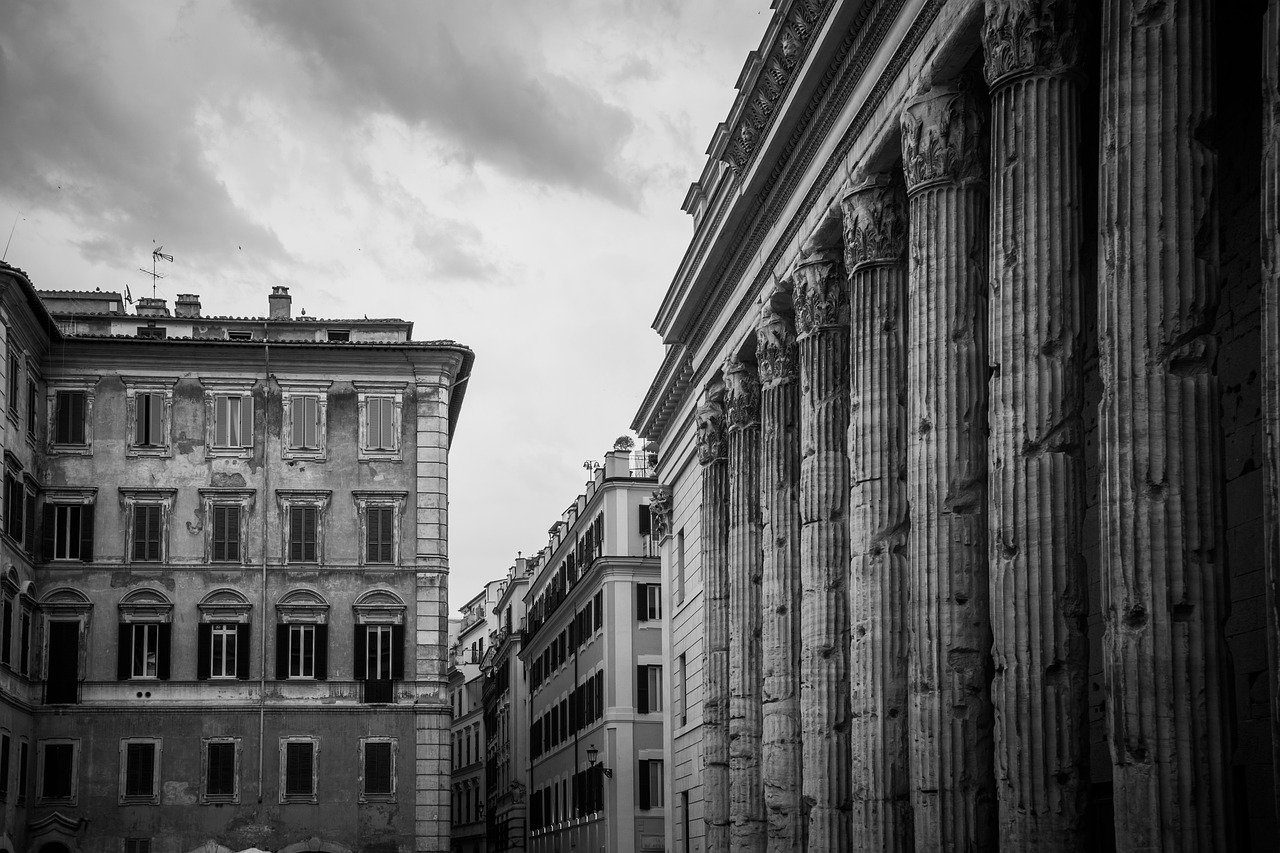
As we briefly discussed earlier, there are many factors of life in any area that may not be suitable for some people, and it’s important to consider these factors before making the move to the city. Some may think of these negative elements as minor setbacks while others may consider them to be a dealbreaker. We will outline these so that you can make your own decision.
The Language Barrier
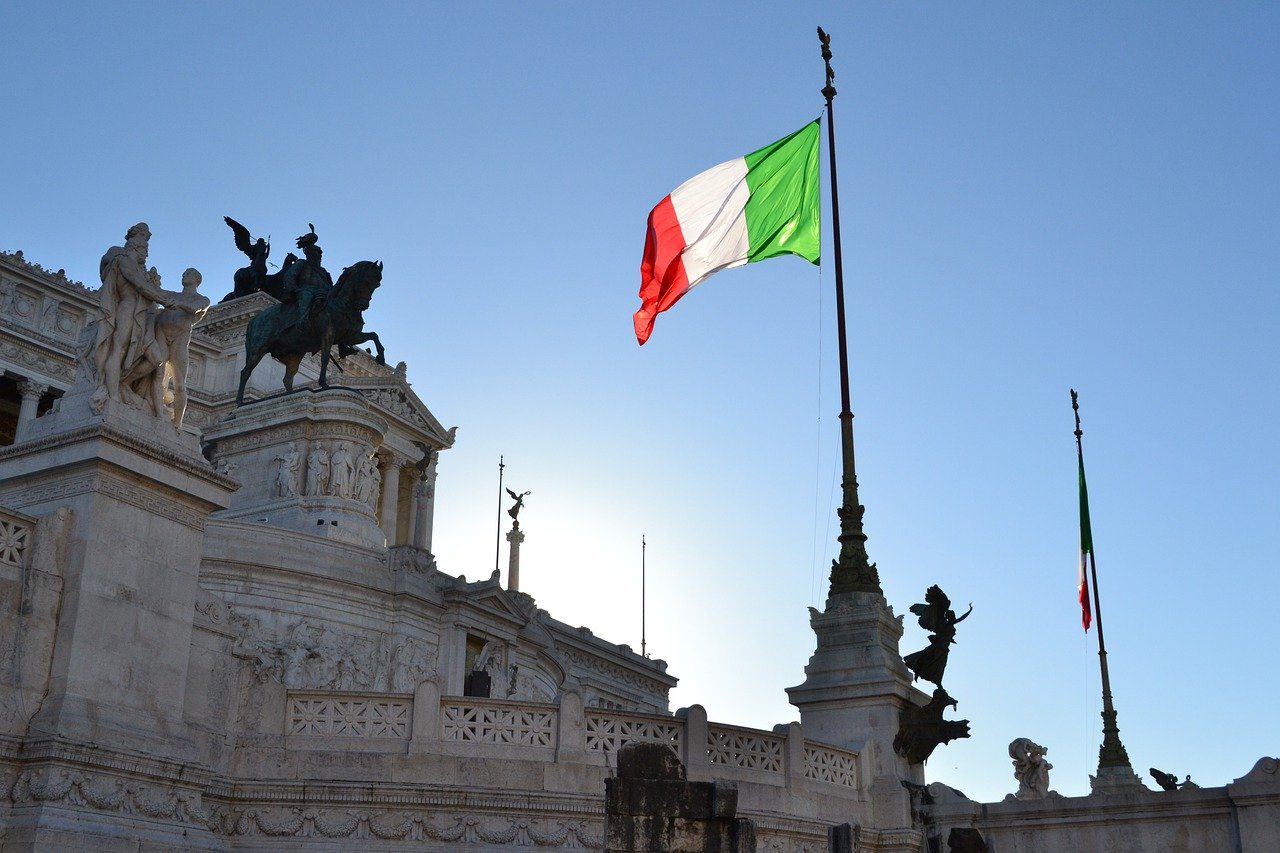
You will run into some trouble if you cannot speak Italian while living in Rome. Situations such as apartment hunting, medical appointments, or needing help from locals will usually result in the need to speak the local language of Italian. In terms of apartment hunting, if you can’t speak Italian it would help if you could understand some key phrases to be able to figure out what each apartment offers, as these will typically be written in Italian.
English-speaking doctors in Rome are hard to find. Again, you could try and learn Italian but this will be much more difficult in a healthcare setting where you must convey the correct message to your healthcare professional. The solution to this problem is to opt for private healthcare, but keep in mind that this can be quite expensive.
This being said, it is strongly advised to get health insurance when traveling to Italy. SafetyWing is providing medical and travel insurance for digital nomads. Their Nomad Insurance covers your stay in Rome, in Italy and in every part of the globe.
Another obstacle you will have to face while living in Rome is that a large number of locals cannot speak English. If you ONLY speak English, this will cause problems in your day-to-day life, especially if you require help from locals at some point. We would recommend that you try to learn some Italian, even if it’s just some keywords and phrases that can help you in your day-to-day life there.
Lastly, if you need to apply for a visa, the applications will be written in Italian so you may need assistance with this if you don’t speak Italian. We will discuss this process further next.
Difficult Visa Process
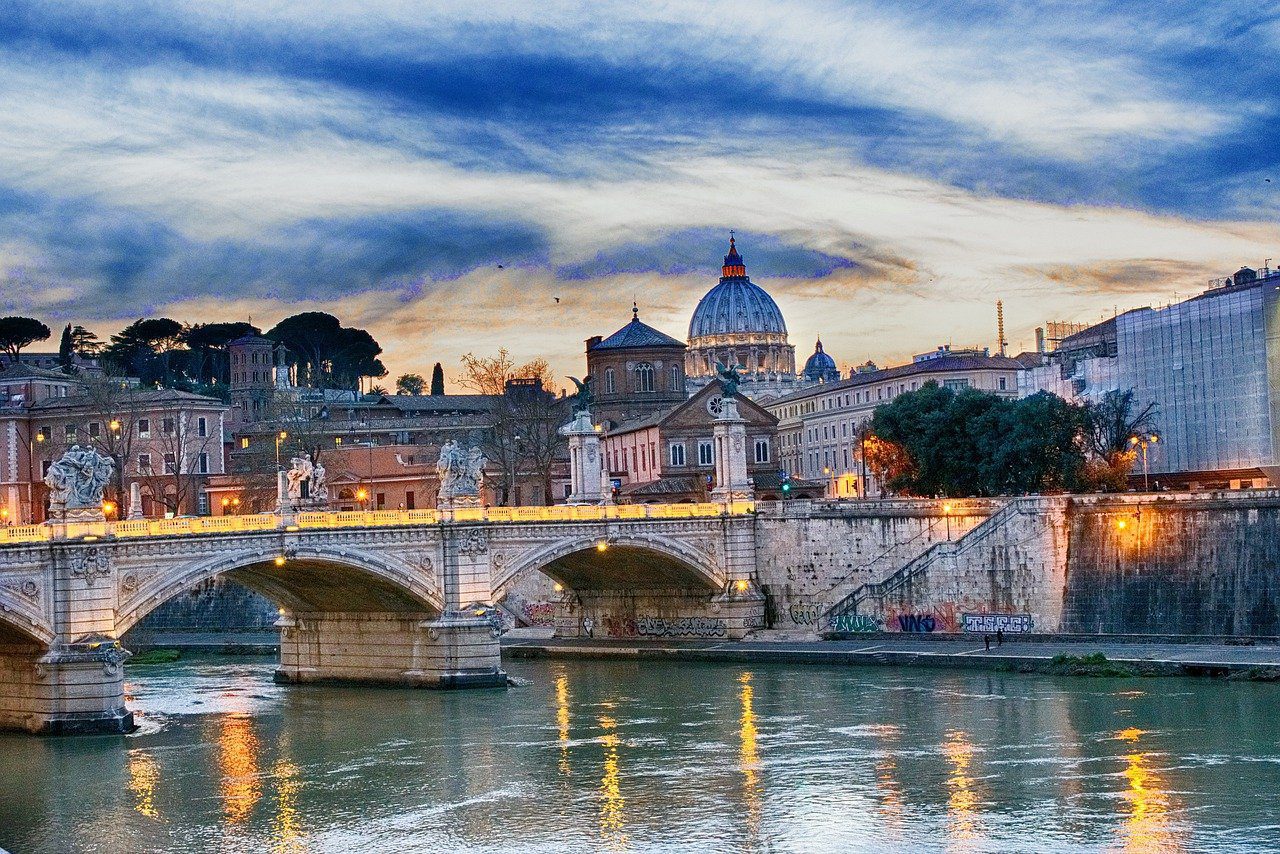
This obstacle only arises for non-EU citizens. To stay in Rome for any duration longer than three months as a non-EU citizen, you’ll have to complete this process. First, you’ll have to go to a local post office in Rome and pick up an Italian residence permit application kit. You’ll need a stamp to put on this application form (which will cost 16 euros) and then return the kit to the post office to be sent off along with your supporting documents. After this process has been completed, you’ll get 6-12 months in Rome and then have to repeat the process all over again.
The Verdict

All in all, there are more perks associated with life in Rome as a digital nomad compared to the negative aspects of it. It depends on your circumstances and what factors you need to consider. The wonderful thing about being a digital nomad is that you can move around and find a place to call home. We would recommend Rome for any digital nomads starting in a new country!










